-
 Bitcoin
Bitcoin $117900
0.31% -
 Ethereum
Ethereum $3766
0.28% -
 XRP
XRP $3.176
-0.31% -
 Tether USDt
Tether USDt $1.000
0.00% -
 BNB
BNB $795.6
1.51% -
 Solana
Solana $186.8
-1.09% -
 USDC
USDC $0.9999
-0.01% -
 Dogecoin
Dogecoin $0.2353
-1.33% -
 TRON
TRON $0.3226
1.49% -
 Cardano
Cardano $0.8172
-1.08% -
 Sui
Sui $4.178
3.06% -
 Hyperliquid
Hyperliquid $43.05
-3.39% -
 Stellar
Stellar $0.4367
-0.57% -
 Chainlink
Chainlink $18.62
1.47% -
 Hedera
Hedera $0.2828
6.63% -
 Bitcoin Cash
Bitcoin Cash $584.7
5.65% -
 Avalanche
Avalanche $24.81
2.53% -
 Litecoin
Litecoin $112.8
-0.88% -
 UNUS SED LEO
UNUS SED LEO $8.975
-0.08% -
 Shiba Inu
Shiba Inu $0.00001395
-1.07% -
 Toncoin
Toncoin $3.285
-1.05% -
 Ethena USDe
Ethena USDe $1.001
0.01% -
 Polkadot
Polkadot $4.123
0.76% -
 Uniswap
Uniswap $10.49
-0.18% -
 Monero
Monero $326.5
0.14% -
 Dai
Dai $0.9999
-0.02% -
 Bitget Token
Bitget Token $4.576
0.34% -
 Pepe
Pepe $0.00001247
-1.55% -
 Cronos
Cronos $0.1400
3.77% -
 Aave
Aave $295.1
-0.73%
Ethereum 2.0 upgrade content? Ethereum 2.0 upgrade changes
Ethereum 2.0 upgrades the blockchain with Proof-of-Stake, slashing energy use and boosting scalability through sharding and Layer 2 solutions.
Jun 16, 2025 at 05:49 am

What Is Ethereum 2.0?
Ethereum 2.0, also known as Ethereum Serenity, is a major upgrade to the Ethereum blockchain aimed at improving scalability, security, and sustainability. The primary change introduced by this upgrade is the transition from a Proof-of-Work (PoW) consensus mechanism to a Proof-of-Stake (PoS) model. This shift reduces energy consumption significantly and allows users to participate in network validation by staking their ETH instead of mining through computational power.
Ethereum 2.0 does not replace the existing Ethereum network but rather evolves it into a more efficient system. It introduces several phases that roll out over time, each contributing to the overall goal of enhancing performance and decentralization.
Phases of the Ethereum 2.0 Upgrade
The Ethereum 2.0 upgrade is implemented in multiple phases to ensure stability and gradual adoption. Each phase addresses specific components of the network:
- Phase 0 – Beacon Chain: Launched in December 2020, this phase introduced the Beacon Chain, which manages the PoS consensus. It enables validators to stake ETH and coordinate with shard chains in later phases.
- Phase 1 – Shard Chains: This phase focuses on sharding, a method of splitting the blockchain into smaller parts to increase transaction throughput. While the original plan included 64 shard chains, the roadmap evolved to prioritize Layer 2 scaling solutions like rollups.
- Phase 1.5 – The Merge: Officially completed in September 2022, The Merge marked the integration of the existing Ethereum mainnet with the Beacon Chain. This step finalized the transition from PoW to PoS.
- Phase 2 – Execution Engines: Still under development, this phase aims to enable full functionality for smart contracts and accounts within the new PoS framework. It will allow for withdrawals of staked ETH and further enhance scalability.
Each phase plays a crucial role in transforming Ethereum into a more scalable and energy-efficient blockchain.
Consensus Mechanism: From PoW to PoS
One of the most significant changes in Ethereum 2.0 is the switch from Proof-of-Work (PoW) to Proof-of-Stake (PoS). In PoW, miners compete to solve cryptographic puzzles to validate blocks, consuming large amounts of electricity. In contrast, PoS selects validators based on the amount of ETH they are willing to stake as collateral.
Validators are chosen randomly to propose and attest to new blocks. If they act dishonestly or fail to perform, their staked ETH can be slashed. This economic incentive ensures network security without requiring massive computational resources.
Staking requires a minimum of 32 ETH per validator node, allowing anyone with sufficient funds to contribute to network security and earn rewards. This democratizes participation compared to PoW, where specialized hardware is necessary.
Staking Process and Requirements
To become a validator on Ethereum 2.0, users must follow a detailed process:
- Deposit 32 ETH into the deposit contract: This action locks the ETH and activates the validator node.
- Set up a validator client and beacon node: These software components communicate with the Ethereum network and handle block proposals and attestations.
- Maintain consistent uptime and connectivity: Validators must remain online to avoid penalties for missed attestations or proposals.
- Secure private keys and backup credentials: Losing access to the keystore files means losing access to both the validator and staked ETH.
Users who do not meet the 32 ETH requirement can participate via staking pools or services offered by exchanges and third-party providers. These platforms pool smaller contributions and distribute rewards proportionally.
It's important to note that withdrawals were not enabled until after The Merge, so early stakers had to wait until the final stages of Phase 1.5 to retrieve their funds.
Impact on Network Performance and Scalability
Ethereum 2.0 significantly improves network performance by reducing congestion and increasing throughput. The introduction of sharding allows data to be processed across multiple chains simultaneously, lowering fees and speeding up transactions.
In addition, Layer 2 solutions such as Optimistic Rollups and zk-Rollups benefit from the upgraded base layer by anchoring their proofs more efficiently. This synergy between Layer 1 and Layer 2 enhances the overall user experience.
Gas fee volatility has decreased, making Ethereum more predictable and usable for developers and end-users. The combination of PoS and sharding contributes to a more sustainable and scalable ecosystem, positioning Ethereum as a long-term platform for decentralized applications (dApps).
Frequently Asked Questions (FAQ)
Q: Can I unstake my ETH immediately after The Merge?
A: No, full unstaking capabilities became available after further upgrades post-Merge. Users must wait for the implementation of withdrawals in subsequent updates.
Q: Do I need technical expertise to run a validator node?
A: Running a validator node requires a basic understanding of command-line tools, networking, and system maintenance. Beginners may opt for non-custodial staking services or use user-friendly interfaces provided by staking platforms.
Q: Will Ethereum 2.0 eliminate gas fees entirely?
A: No, gas fees still exist but are expected to become more stable and predictable due to improved scalability and efficiency.
Q: How does Ethereum 2.0 affect existing dApps and smart contracts?
A: Most dApps and smart contracts continue functioning as usual. However, developers may optimize their code to take advantage of lower fees and faster confirmations introduced by the upgrade.
Disclaimer:info@kdj.com
The information provided is not trading advice. kdj.com does not assume any responsibility for any investments made based on the information provided in this article. Cryptocurrencies are highly volatile and it is highly recommended that you invest with caution after thorough research!
If you believe that the content used on this website infringes your copyright, please contact us immediately (info@kdj.com) and we will delete it promptly.
- Cryptos to Watch in 2025: Punisher Coin, Chainlink, and the Altcoin Arena
- 2025-07-27 18:30:13
- Bitcoin, Altcoins, Rebound: Navigating the Crypto Comeback Trail
- 2025-07-27 18:30:13
- Ethereum, Bitcoin, and Altcoins: A Shift in Crypto Tides?
- 2025-07-27 19:10:13
- Windtree Therapeutics' Bold BNB Strategy: A $520 Million Crypto Play
- 2025-07-27 19:10:13
- Solana, Staking, and Unilabs: What's the Buzz in the Crypto Space?
- 2025-07-27 16:50:13
- VeChain, HBAR, Remittix: Navigating the Crypto Landscape in 2025
- 2025-07-27 17:10:12
Related knowledge
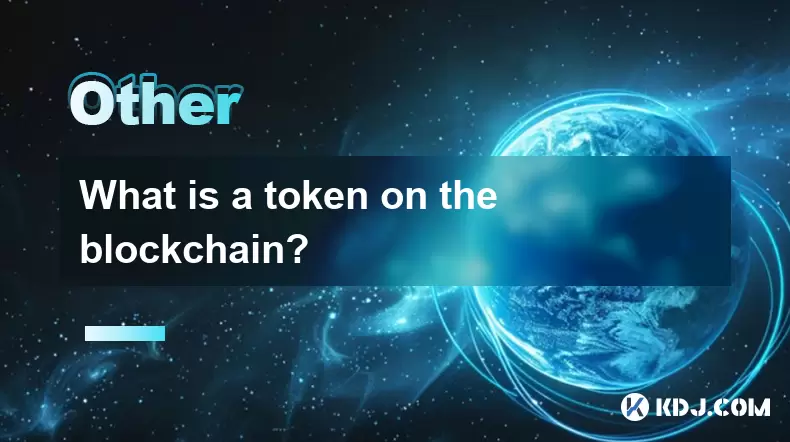
What is a token on the blockchain?
Jul 21,2025 at 07:00am
Understanding the Concept of a TokenIn the realm of blockchain technology, a token is a digital representation of an asset or utility that exists on a...
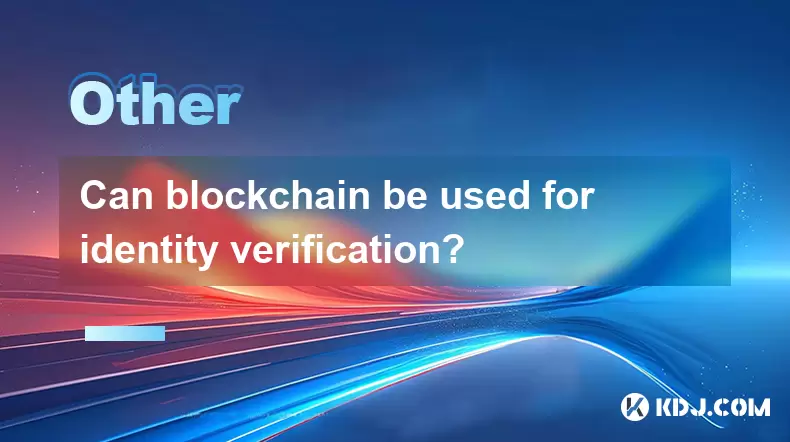
Can blockchain be used for identity verification?
Jul 18,2025 at 02:14pm
Understanding Identity Verification in the Digital AgeIn the modern digital landscape, identity verification has become a critical component for ensur...
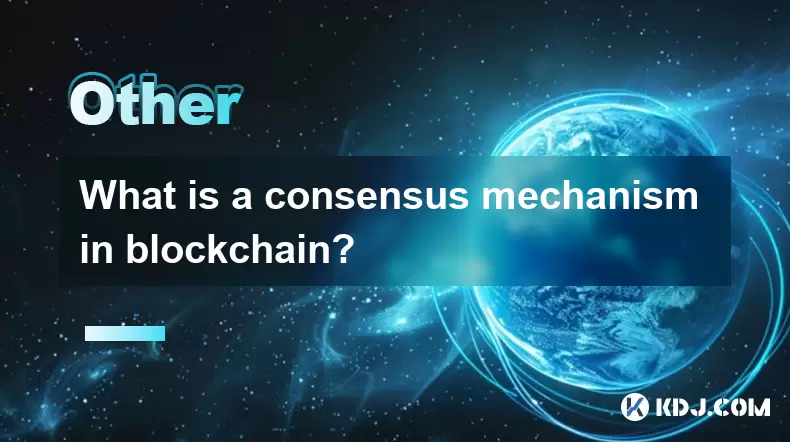
What is a consensus mechanism in blockchain?
Jul 21,2025 at 03:01am
Understanding the Basics of Consensus MechanismsA consensus mechanism is a critical component of any blockchain network. It refers to the process by w...
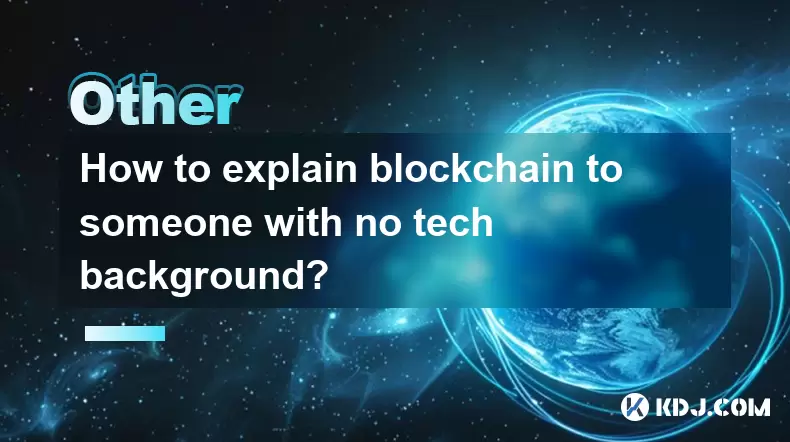
How to explain blockchain to someone with no tech background?
Jul 18,2025 at 11:08pm
Understanding the Basics of BlockchainTo explain blockchain to someone with no tech background, it's essential to start with simple analogies and avoi...

Who invented blockchain technology?
Jul 23,2025 at 01:28am
Origins of Blockchain TechnologyBlockchain technology did not emerge from a single inventor or institution. Instead, it evolved through a series of ac...
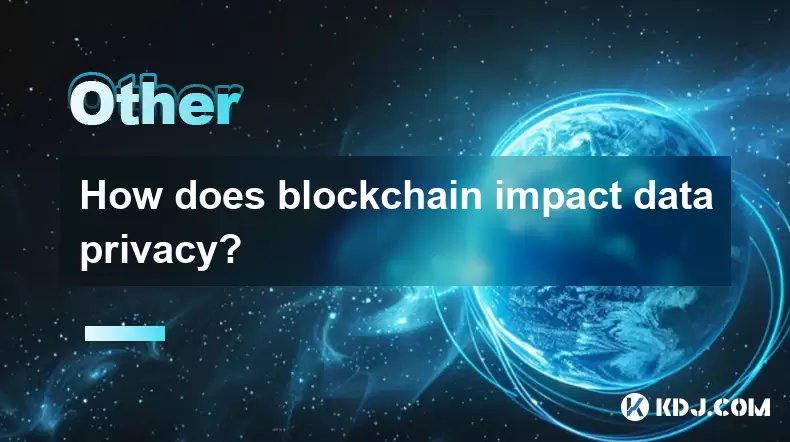
How does blockchain impact data privacy?
Jul 21,2025 at 02:21pm
Understanding the Role of Blockchain in Data PrivacyBlockchain technology, originally developed as the underlying infrastructure for cryptocurrencies ...

What is a token on the blockchain?
Jul 21,2025 at 07:00am
Understanding the Concept of a TokenIn the realm of blockchain technology, a token is a digital representation of an asset or utility that exists on a...

Can blockchain be used for identity verification?
Jul 18,2025 at 02:14pm
Understanding Identity Verification in the Digital AgeIn the modern digital landscape, identity verification has become a critical component for ensur...

What is a consensus mechanism in blockchain?
Jul 21,2025 at 03:01am
Understanding the Basics of Consensus MechanismsA consensus mechanism is a critical component of any blockchain network. It refers to the process by w...

How to explain blockchain to someone with no tech background?
Jul 18,2025 at 11:08pm
Understanding the Basics of BlockchainTo explain blockchain to someone with no tech background, it's essential to start with simple analogies and avoi...

Who invented blockchain technology?
Jul 23,2025 at 01:28am
Origins of Blockchain TechnologyBlockchain technology did not emerge from a single inventor or institution. Instead, it evolved through a series of ac...

How does blockchain impact data privacy?
Jul 21,2025 at 02:21pm
Understanding the Role of Blockchain in Data PrivacyBlockchain technology, originally developed as the underlying infrastructure for cryptocurrencies ...
See all articles

























































































